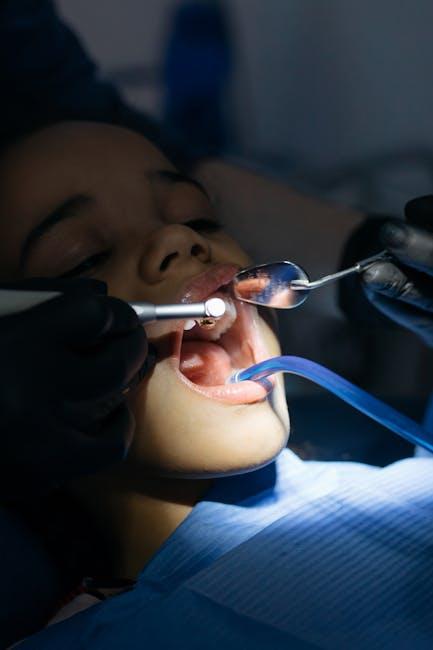Tooth Decay Still Plagues California Kids Nearly a Decade After Medi-Cal Promised Change
Source: Los Angeles Times
Introduction
Nearly ten years after California’s Medi-Cal program vowed to improve dental care access and reduce tooth decay among children, the reality paints a troubling picture. Tooth decay remains one of the most common chronic childhood diseases in the state, disproportionately impacting low-income and marginalized communities. This article delves deeply into why tooth decay still affects California kids, the promises and pitfalls of Medi-Cal’s dental care reforms, and actionable insights for parents, caregivers, and policymakers.
Understanding the Scope of Childhood Tooth Decay in California
Tooth decay, also known as dental caries, doesn’t just affect a child’s smile—it’s a debilitating condition that can impair speech, eating, learning, and self-esteem. Despite advances in dental care and public health initiatives, California continues to battle high rates of childhood tooth decay, especially among children enrolled in Medi-Cal, the state’s Medicaid program.
Key Statistics:
- Approximately one in four California children under age 6 has untreated tooth decay.
- Children from low-income families on Medi-Cal are nearly twice as likely to suffer from untreated cavities compared to those not on the program.
- Tooth decay remains the leading cause of emergency room visits for preventable dental pain in California’s children.
The Medi-Cal Promise: What Went Wrong?
In 2015, Medi-Cal launched a series of dental reforms aimed at expanding preventive care, improving reimbursement rates for dentists, and increasing access to dental services for children. The goal was to slash tooth decay rates and bridge the gap for underserved communities.
However, nearly a decade later, these objectives have yet to be fully realized. Here are the main challenges and setbacks that continue to hinder progress:
Challenges in Medi-Cal’s Dental Program
- Provider Shortages: Fewer dentists accept Medi-Cal patients due to low reimbursement rates and administrative burdens.
- Limited Access to Preventive Care: Children often receive care only once decay becomes severe, missing early intervention opportunities.
- Social Barriers: Language differences, transportation issues, and lack of parental awareness reduce dental visits.
- Systemic Inequities: Certain ethnic and low-income groups experience higher barriers to care, sustaining health disparities.
Why Early Dental Care Matters: Benefits of Prevention
Prevention is the cornerstone of defeating tooth decay. When children have access to regular dental care, early detection and treatment can prevent cavities, reduce pain, and avoid costly emergency care.
Benefits of Early Preventive Dental Care
- Strengthens teeth through fluoride treatments and sealants.
- Reduces the risk of infections that can affect overall health.
- Promotes healthy habits and oral hygiene from a young age.
- Decreases absenteeism from school due to dental problems.
Table: Medi-Cal Dental Reform Timeline & Key Milestones
| Year | Key Reform | Outcome |
|---|---|---|
| 2015 | Medi-Cal expanded dental benefits for children | Increased coverage but limited provider participation |
| 2017 | Boosted reimbursement rates for dentists | Some improvement in provider acceptance rates |
| 2019 | Initiated school-based dental programs | Better outreach but funding constraints remain |
| 2023 | Ongoing tele-dentistry pilot program | Mixed results; promising for rural access |
Case Study: Impact on Low-Income Families
Maria, a mother of three in Los Angeles, shares her story: “I enrolled my kids in Medi-Cal dental care when they were toddlers. But getting appointments was hard. Most dentists in our area wouldn’t accept Medi-Cal, and when they did, the wait times were long. My youngest child still developed cavities because we missed preventive checkups.”
Stories like Maria’s illustrate the persistent gap between policy promises and lived realities. For many families, dental access isn’t just about availability—it’s about navigating complex and fragmented systems.
Practical Tips for Parents to Combat Tooth Decay
While systemic change is essential, parents and caregivers can take proactive steps to protect their children’s dental health today.
Top Tips to Reduce Childhood Tooth Decay:
- Start Early: Begin dental visits by the child’s first birthday.
- Practice Good Oral Hygiene: Brush twice daily with fluoride toothpaste and floss regularly.
- Limit Sugary Snacks and Drinks: Reduce sugar intake to prevent cavity formation.
- Ask About Sealants: Dental sealants provide a protective barrier on molars.
- Utilize School and Community Programs: Many schools offer dental screenings and free fluoride varnish treatments.
Looking Ahead: What Needs to Change
To truly reduce tooth decay among California’s children, Medi-Cal and policymakers need to:
- Increase Dentist Participation: Streamline paperwork and raise reimbursement rates further.
- Expand Community Outreach: Culturally competent education campaigns to increase awareness.
- Invest in Innovative Solutions: Tele-dentistry and mobile clinics to reach underserved areas.
- Strengthen School-Based Programs: Regular dental screenings and preventive treatments on-site.
Conclusion
Nearly a decade after Medi-Cal pledged to fix dental disparities, tooth decay remains a stubborn and painful problem for many California children. While policies have laid some groundwork toward improved access and preventive care, significant barriers still stand in the way. Parents, communities, providers, and policymakers must work collaboratively to ensure every child can enjoy a healthy smile—because dental care is not a luxury; it’s a fundamental right.
By understanding the challenges, advocating for systemic reform, and taking practical steps at home, we can start to turn the tide on childhood tooth decay in California.


